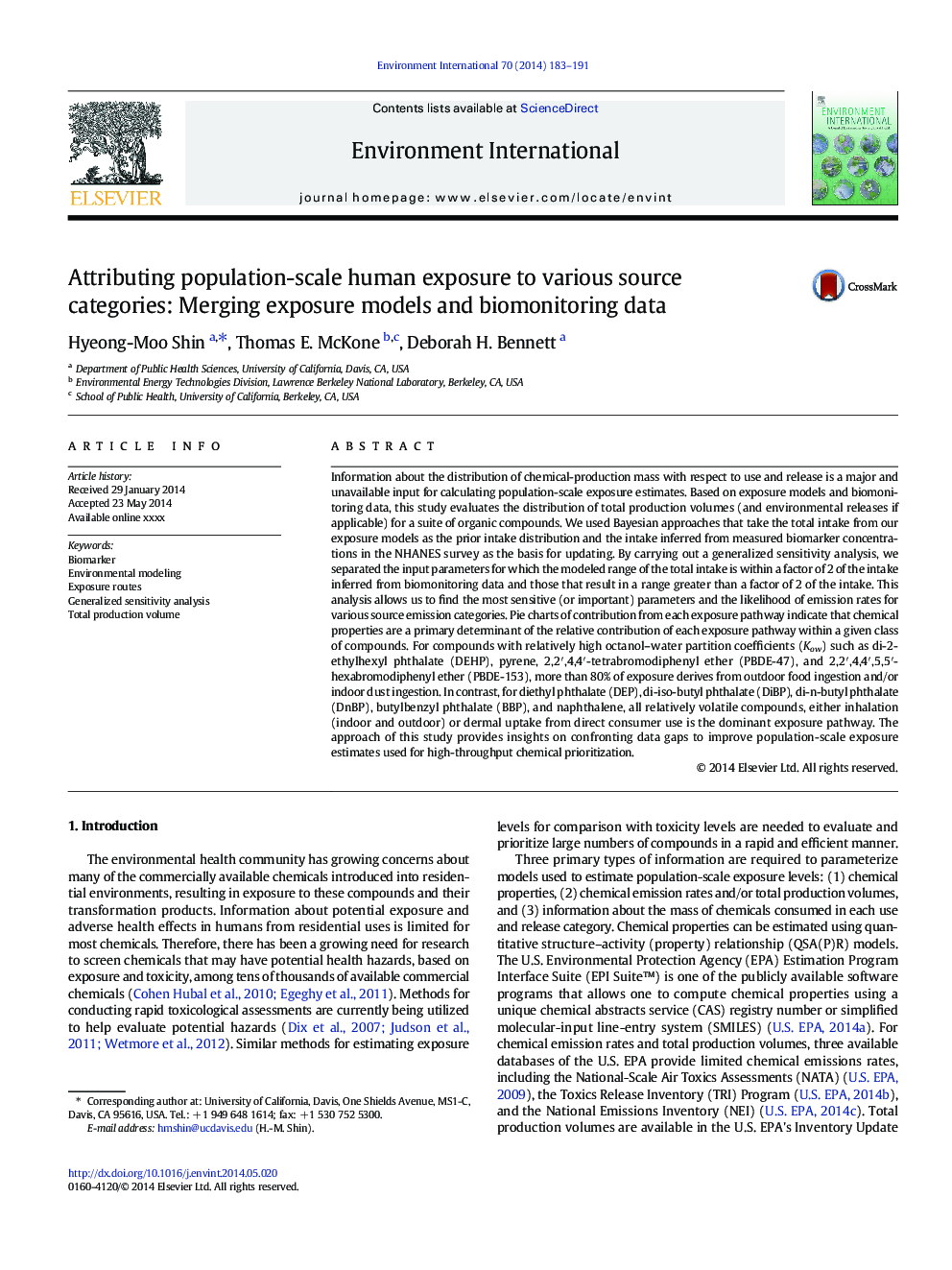| کد مقاله | کد نشریه | سال انتشار | مقاله انگلیسی | نسخه تمام متن |
|---|---|---|---|---|
| 6313732 | 1619058 | 2014 | 9 صفحه PDF | دانلود رایگان |
عنوان انگلیسی مقاله ISI
Attributing population-scale human exposure to various source categories: Merging exposure models and biomonitoring data
ترجمه فارسی عنوان
قرار گرفتن مقیاس انسانی در مقیاس جمعیت در دسته های مختلف منبع: ادغام مدل های قرار گرفتن در معرض و داده های بیومونیتوری
دانلود مقاله + سفارش ترجمه
دانلود مقاله ISI انگلیسی
رایگان برای ایرانیان
کلمات کلیدی
بیومارکر، مدلسازی محیطی، مسیرهای قرار گرفتن در معرض، تجزیه و تحلیل حساسیت عمومی، حجم تولید کل،
موضوعات مرتبط
علوم زیستی و بیوفناوری
علوم محیط زیست
شیمی زیست محیطی
چکیده انگلیسی
Information about the distribution of chemical-production mass with respect to use and release is a major and unavailable input for calculating population-scale exposure estimates. Based on exposure models and biomonitoring data, this study evaluates the distribution of total production volumes (and environmental releases if applicable) for a suite of organic compounds. We used Bayesian approaches that take the total intake from our exposure models as the prior intake distribution and the intake inferred from measured biomarker concentrations in the NHANES survey as the basis for updating. By carrying out a generalized sensitivity analysis, we separated the input parameters for which the modeled range of the total intake is within a factor of 2 of the intake inferred from biomonitoring data and those that result in a range greater than a factor of 2 of the intake. This analysis allows us to find the most sensitive (or important) parameters and the likelihood of emission rates for various source emission categories. Pie charts of contribution from each exposure pathway indicate that chemical properties are a primary determinant of the relative contribution of each exposure pathway within a given class of compounds. For compounds with relatively high octanol-water partition coefficients (Kow) such as di-2-ethylhexyl phthalate (DEHP), pyrene, 2,2â²,4,4â²-tetrabromodiphenyl ether (PBDE-47), and 2,2â²,4,4â²,5,5â²-hexabromodiphenyl ether (PBDE-153), more than 80% of exposure derives from outdoor food ingestion and/or indoor dust ingestion. In contrast, for diethyl phthalate (DEP), di-iso-butyl phthalate (DiBP), di-n-butyl phthalate (DnBP), butylbenzyl phthalate (BBP), and naphthalene, all relatively volatile compounds, either inhalation (indoor and outdoor) or dermal uptake from direct consumer use is the dominant exposure pathway. The approach of this study provides insights on confronting data gaps to improve population-scale exposure estimates used for high-throughput chemical prioritization.
ناشر
Database: Elsevier - ScienceDirect (ساینس دایرکت)
Journal: Environment International - Volume 70, September 2014, Pages 183-191
Journal: Environment International - Volume 70, September 2014, Pages 183-191
نویسندگان
Hyeong-Moo Shin, Thomas E. McKone, Deborah H. Bennett,
